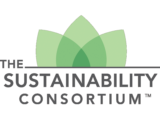The Sustainability Journey
Corporate sustainability leadership: the journey
Successful business leaders understand that a thriving economy depends on a thriving environment, and vice versa. Your customers, employees, suppliers, shareholders and potential investors are well aware that the myth of an “either/or” tradeoff between sustainability and profitability no longer exists. Now, more than ever, the world is your business.
Yet, while the need for corporate sustainability has long been proven, following a clear pathway to leadership — where your company’s business and sustainability goals are in alignment — can be challenging.
The Supply Chain Solutions Center roadmap to leadership can help you navigate that path.
Continue Reading

Featured Content
Report: Accelerating zero-emissions delivery
Report
Explore The Sustainability Journey
Sustainability 101
Sustainability needs to be weaved into your business, not bolted down. These resources will help you learn how to start the sustainability journey for your company.
View All Sustainability 101 ResourcesLevel 1: Engage
The genesis of your company’s commitment to corporate sustainability, this stage is about getting informed on the issues, understanding the landscape (both internally and externally), assessing your areas of opportunity and influence, and discovering where you need help (and how you can get it).
View All Level 1: Engage ResourcesLevel 2: Execute
This stage is about advancing and innovating across your company’s landscape — from your own operations to your suppliers'. It’s a multi-faceted process that ranges from building sustainability plans and proving the business case to implementing, measuring, reporting, scaling and beginning to take a public stand on issues and policies.
View All Level 2: Execute ResourcesLevel 3: Lead
Leading on corporate sustainability means bringing your company’s business and environmental goals into seamless, transparent alignment. You’re accelerating environmental innovation, actively advocating for smart environmental policies, and advancing sustainable business practices to alter the landscape across entire industries and business sectors.
View All Level 3: Lead ResourcesThe Sustainability Journey Resources
Filter by our "Sustainability 101" categories for a concise, high-level overview of Agriculture, Forests, Chemicals, Energy, Freight or Waste. You can also view all of the Engage (Level 1), Execute (Level 2) and Lead (Level 3) resources by filtering for interest areas that are relevant to your company.
Title
Date
Type
This guide will point you to trusted experts who can help you set goals, give you insight on making the business case, give you examples of companies who have been where you are before, and arm you with many other resources you need to put your sustainability plan into action.
02/24/2019
Guide
Taking stock of the environmental impacts of the activities/operations up and down your company’s supply chain helps you understand your company’s current environmental performance and determine where to focus your efforts.
02/24/2019
Guide
Who in your company is responsible for relevant activities and operations? Who do you need to educate, get buy-in from or work with to launch, implement and scale your sustainability plan?
02/24/2019
Guide
Goal-setting is important not only because it will be your “north star” that will guide you to success, but also because it’s a public statement — to employees, customers, shareholders, investors, suppliers and competitors.
02/24/2019
Guide
You can’t manage what you don’t measure, so it’s important to define specific objectives, baselines and metrics so you can measure progress towards your goals over time.
02/24/2019
Guide
Improving your company’s supply chain sustainability will be an iterative process that will need to be tested, measured, corrected and then scaled. Thus, pilot projects are an essential element of a successful sustainability plan.
02/24/2019
Guide
The business case for your sustainability plan is a crucial step for creating internal buy-in and unlocking the necessary resources to implement your plan.
02/24/2019
Guide
The business case for your sustainability plan is a crucial step for creating internal buy-in and unlocking the necessary resources to implement your plan.
02/24/2019
Guide
Drivers of change are the answers that each stakeholder would give to these two important questions: “What business opportunities do I care about?” and "What business risks do I care about?”
02/24/2019
Guide
A successful business plan understands what drivers can provide the most quantitative benefit to the environment and company. Arriving at the answer is both a science and an art.
02/24/2019
Guide
The goal of stakeholder activation is to is understand who your biggest allies are behind the drivers of change, and how you might get buy-in from those who aren’t.
02/24/2019
Guide
Because data can range from tangible (cost savings) to relatively intangible (e.g., brand reputation), identifying the correct data and its availability may be the most challenging part of developing your business case.
02/24/2019
Guide
Load More






















